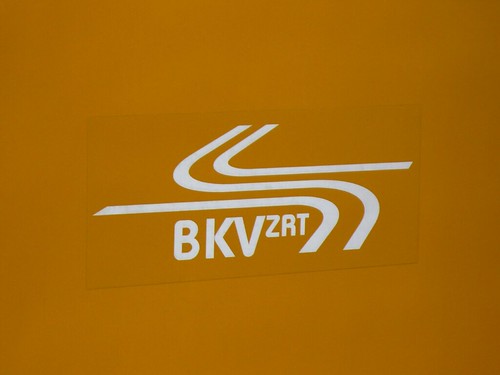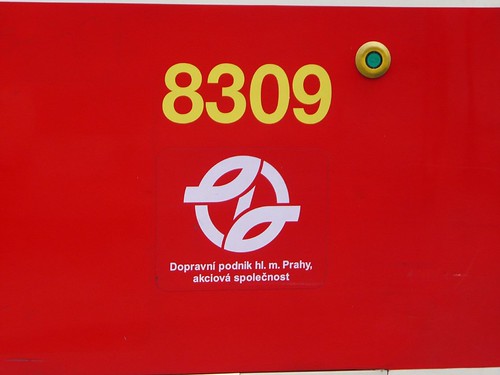Josh Lapp, a board member at the advocacy organization Transit Columbus, joins us this week to talk about Ohio’s capital city — how it’s becoming more urban, how its stadiums have been situated to support downtown growth and walkability, and how transportation options like light rail and bike-share are developing. And of course, you’ll hear about Columbus’s winning bid in U.S. DOT’s Smart City Challenge.
Showing posts with label Columbus. Show all posts
Showing posts with label Columbus. Show all posts
Monday, August 22, 2016
Sunday, January 11, 2009
Setting New Timelines
Yonah discusses issues related to the Columbus plans for a light rail line using the stimulus funding. I would note that it was partially because of the FTA's cost effectiveness index that this corridor project got killed. They gave Columbus a large CEI for both light rail and BRT projects. It just shows how they have always been looking at the wrong metrics and hold transit to a different standard than roads.
That brings us though to the issue of what that CEI has wrought in terms of projects moving forward around the country as well as thier timline.
One of the problems with the current thinking on transit and the "ready to go-ness" of them is that people think that the current speed at which transit projects get done is how it has always been. This is wrong and simply a function of how broken the funding system has become. Obviously it shouldn't have taken Charlotte 10 years to build their first rail line but it was trying to get through the federal funding program that took so long. This gives lawmakers a poor idea of how actually long it will take.
We need to push back hard on assumptions that the lines can not be started within a three month or even a year period after the stimulus money is let. That assumes also we don't get rolled by state DOTs (aka highway departments) which is another outrage entirely. There should be some sort of experementation with design build in these transit projects, especially since many of them will be street running, even with thier own ROW. It's not as if engineers will not be in need of funding for thier businesses either. This recession is hitting everyone, not just construction workers.
But we can see how fast things can go when they are planned from Portland and Seattle. Portland announced the alignment in 1997 and the line was open in 2001. In Seattle, it took 5 years from thought to operations. This is half the time it took Charlotte to open and possibly shows that if you have an alignment and the funding, it can be designed and moved forward in short order. In the next few years we'll have a few more examples with Salt Lake moving so fast on thier lines, hopefully a few more because of the stimulus.
That brings us though to the issue of what that CEI has wrought in terms of projects moving forward around the country as well as thier timline.
One of the problems with the current thinking on transit and the "ready to go-ness" of them is that people think that the current speed at which transit projects get done is how it has always been. This is wrong and simply a function of how broken the funding system has become. Obviously it shouldn't have taken Charlotte 10 years to build their first rail line but it was trying to get through the federal funding program that took so long. This gives lawmakers a poor idea of how actually long it will take.
We need to push back hard on assumptions that the lines can not be started within a three month or even a year period after the stimulus money is let. That assumes also we don't get rolled by state DOTs (aka highway departments) which is another outrage entirely. There should be some sort of experementation with design build in these transit projects, especially since many of them will be street running, even with thier own ROW. It's not as if engineers will not be in need of funding for thier businesses either. This recession is hitting everyone, not just construction workers.
But we can see how fast things can go when they are planned from Portland and Seattle. Portland announced the alignment in 1997 and the line was open in 2001. In Seattle, it took 5 years from thought to operations. This is half the time it took Charlotte to open and possibly shows that if you have an alignment and the funding, it can be designed and moved forward in short order. In the next few years we'll have a few more examples with Salt Lake moving so fast on thier lines, hopefully a few more because of the stimulus.
Thursday, July 17, 2008
We already have a fabulous rapid-transit system…
…it’s called the freeway! That's what a board member of the Central Ohio Transit Agency said in Columbus. How do these guys get appointed to a transit board if they don't even like transit? It also seems to be an Ohio thing. Stephan Louis was on the Board of SORTA, Cincinnati's transit agency. From a 2006 Citybeat Article:
Someone who signed his name as Stephan Louis replied, "Good points throughout your piece. With me sitting on pivotal boards, rail won't likely happen here for some time, but not necessarily. In either event, the city of Cinn. is unlikely to remain in the top 25 metros by 2010."If you read the article, he denies what he said, but its all on the internets. Can't hide from that.
Labels:
Columbus,
Critics,
Rapid Transit
Wednesday, July 2, 2008
What's Not to Like?
Losing Weight, Saving Money and Taking Transit. The COTA Challenge.
I was walking more, to and from the grocery store for example, and walking to the bank, the hardware store, library or Blockbuster rather than taking the car and I shed twenty pounds within five months. When I found that most of my pants were too large, I walked to the new thrift store and bought a new ones.
...
Frankly, the high cost of gas has improved my life.
Tuesday, May 20, 2008
Gas Tax Losers
Wanna see if your region gets the short end of the stick? Check out Gas Tax Losers.
A few examples: for every gas tax dollar to the feds
Austin gets 76 cents
SF gets $1.44
LA gets 87 cents
Columbus OH 66 cents
It seems like if you have a transit system, you get real money back.
A few examples: for every gas tax dollar to the feds
Austin gets 76 cents
SF gets $1.44
LA gets 87 cents
Columbus OH 66 cents
It seems like if you have a transit system, you get real money back.
Friday, March 28, 2008
Streetcar Funding Source
Columbus has come up with a rather innovative funding initiative for their streetcar line. They are going to put a surcharge on event tickets. So whenever you go to a hockey game you'll pay a few extra dollars on your ticket. But it won't be for naught. If you have a ticket, you get a free ride on the transit line. Sounds like a great plan.
Here is the line map courtesy of Xing Columbus, the local transport blog.Coleman plans to send a proposal to the city council before the end of the year in which the city would add a 4 percent surcharge on tickets to most concerts and sporting events within six blocks of the streetcar route.
Another 4 percent surcharge would affect people parking in lots and garages along the line from Downtown to Ohio State University, and parking-meter rates in area would rise an average of 75 cents per hour.
“I'm so convinced this is the right thing,” Coleman told an audience of streetcar supporters last night at City Hall, referring both to the idea he first raised in 2006 and the new plan to pay for it.
Labels:
Columbus,
Funding Sources,
Streetcar
Friday, February 29, 2008
The Glorious Transit Web
It's the web 2.0 and if you have a cause for transit, create a badge so it gets more recognition. Below are a few badges I've seen and causes I'm down with, others I'd like to see a badge for in no particular order:
Sound Transit 2.1
Austin Guadalupe Light Rail
California HSR
Geary Subway
Subway to the Sea


I've also been thinking about the need for a national transit campaign infrastructure. Everyone is really good at keeping up with the local causes but does there need to be some central place for organizing or getting the word out? I'm interested in the model that is used by Daily Kos or MyDD where they have a blog but also have user diaries. Instead of diaries however, because everyone has their own blog, perhaps it would be campaigns. This central blog would have contributors from each metro area discussing what is happening on the battlefield and where things are headed. Many of the blogs do that but this could be a central place to see what is going on nationally kind of like what the City Transit aggregator is trying to do. Perhaps it's a glorified version of the City Transit Aggregator.
Another important thing about this national info hub would be the ability to raise money around campaigns like Act Blue does for Democrats and Slatecard does for Republicans. Basically there are a whole lot of people out there who are interested in national transit policy and could use this as a way to get involved locally where alot of the big decisions are being made and help influence policy at the national level that helps cities get the funding they need for local projects. What do folks think? Is it something that should be fleshed out? Would people be interested in this kind of thing?
Sound Transit 2.1
Austin Guadalupe Light Rail
California HSR
Geary Subway
Subway to the Sea


I've also been thinking about the need for a national transit campaign infrastructure. Everyone is really good at keeping up with the local causes but does there need to be some central place for organizing or getting the word out? I'm interested in the model that is used by Daily Kos or MyDD where they have a blog but also have user diaries. Instead of diaries however, because everyone has their own blog, perhaps it would be campaigns. This central blog would have contributors from each metro area discussing what is happening on the battlefield and where things are headed. Many of the blogs do that but this could be a central place to see what is going on nationally kind of like what the City Transit aggregator is trying to do. Perhaps it's a glorified version of the City Transit Aggregator.
Another important thing about this national info hub would be the ability to raise money around campaigns like Act Blue does for Democrats and Slatecard does for Republicans. Basically there are a whole lot of people out there who are interested in national transit policy and could use this as a way to get involved locally where alot of the big decisions are being made and help influence policy at the national level that helps cities get the funding they need for local projects. What do folks think? Is it something that should be fleshed out? Would people be interested in this kind of thing?
Monday, December 17, 2007
High Ridership = Rail Bias
So the FTA does this thing to cities that haven't had a rail project where the first project is not given a rail bias. We know a bias exists and is about 34-43% according to a TRB report by Ed Tennyson. So in cities like Portland and Denver where they are extending their lines, they were able to use their bias. However cities like Minneapolis and Charlotte weren't able to. In 2020, the Hiawatha line was supposed to get 24,000 riders a day. But here it is 2007, 13 years away from the goal and ridership is at 29,000.
So after a year's worth of ridership data, Charlotte planners will be able to use the bias that they weren't able to use on the first line, which if the FTA used current regulations, wouldn't even have been built. Charlotte got a medium low on their cost effectiveness rating, which now the FTA says you must have a medium to even get into Preliminary Engineering. But guess what they use to calculate cost effectiveness? Ridership! Which seems to be behind recently; Houston, Minneapolis, St. Louis, and Denver have all opened lines recently and have had much higher ridership than predicted. So higher numbers lead to better CE measures, but new lines aren't allowed the bias. Does this mean that new lines aren't afforded the right numbers? Ask the folks in Columbus Ohio. Early indications say that ridership in Charlotte will be exceeded. 9,000 riders were expected and so far daily numbers have been around 12,000. I expect it will die down a little but as more development on the South Corridor comes online, more ridership will be added. What this tells me is that more cities are going to get the short end of the New Starts stick. Is anyone else ready for a new administration that cares about urban issues?
So after a year's worth of ridership data, Charlotte planners will be able to use the bias that they weren't able to use on the first line, which if the FTA used current regulations, wouldn't even have been built. Charlotte got a medium low on their cost effectiveness rating, which now the FTA says you must have a medium to even get into Preliminary Engineering. But guess what they use to calculate cost effectiveness? Ridership! Which seems to be behind recently; Houston, Minneapolis, St. Louis, and Denver have all opened lines recently and have had much higher ridership than predicted. So higher numbers lead to better CE measures, but new lines aren't allowed the bias. Does this mean that new lines aren't afforded the right numbers? Ask the folks in Columbus Ohio. Early indications say that ridership in Charlotte will be exceeded. 9,000 riders were expected and so far daily numbers have been around 12,000. I expect it will die down a little but as more development on the South Corridor comes online, more ridership will be added. What this tells me is that more cities are going to get the short end of the New Starts stick. Is anyone else ready for a new administration that cares about urban issues?
Labels:
Charlotte,
Columbus,
Cost Effectiveness,
FTA,
Houston,
Light Rail
Tuesday, October 23, 2007
Tram System Logos
More fun from the Europe Trip. Here are some photos of Transit Authority Logos. I thought it was interesting the other day when ColumbusING and Xing Columbus brought us MOTO. Here are some from Graz, Budapest, Prague, and Vienna.
Graz

Budapest

Budapest Metro

Prague Metro

Vienna

Graz

Budapest

Budapest Metro

Prague Metro

Vienna

Monday, January 1, 2007
It's a New Year, The Right Time for a Transit Revolution
Welcome to 2007! It's gone by fast but this last 10 years has been very productive in terms of what has happened in the world of transit and its only going to get better. First we have as always mentioned the Transit Space Race. But inside of the TSR which is mainly Rapid Transit, we also have a transit revolution that includes the stalwart workhorse from a century ago, Streetcars.
As move on into 2007 we'll see more and more news about these pedestrian accelerators. Even today on January 1st we have articles from Minnesota and Ohio discussing what Mayors in Minneapolis and Columbus would like to build into their legacies. They are even thinking of innovative ways to finance them rather than through the FTA. Many other cities are thinking about this as well and perhaps (shameless plug approaching) this book will help move the revolution. It will be an exciting year never the less.
Update from a few days ago: Tampa News Says that Folks There Want in the Space Race. - Hat Tip Tampa Rail Blog
As move on into 2007 we'll see more and more news about these pedestrian accelerators. Even today on January 1st we have articles from Minnesota and Ohio discussing what Mayors in Minneapolis and Columbus would like to build into their legacies. They are even thinking of innovative ways to finance them rather than through the FTA. Many other cities are thinking about this as well and perhaps (shameless plug approaching) this book will help move the revolution. It will be an exciting year never the less.
Update from a few days ago: Tampa News Says that Folks There Want in the Space Race. - Hat Tip Tampa Rail Blog
Subscribe to:
Comments (Atom)
